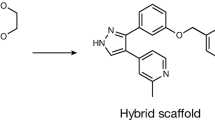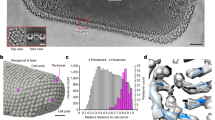Abstract
PENICILLINS and cephalosporins (β-lactam antibiotics) are believed to kill bacteria by inhibiting reactions involved in the final stages of cell wall assembly1. It is widely assumed that inhibition of a transpeptidase involved in the insertion of nascent peptidoglycan strands into the cell wall directly leads to cell death. One approach to the study of the lethal action of penicillin has involved the investigation of penicillin-binding proteins (PBPs) which, with few exceptions, are located exclusively in the cytoplasmic membrane of bacteria2–4. PBPs form covalent complexes with benzyl-(14C)-penicillin, and can be detected by fluorography after sodium dodecyl sulphate (SDS) polyacrylamide gel electrophoresis. All species of bacteria examined contain multiple PBPs. We have shown that the isolated membranes of Bacillus megaterium contain five proteins which bind benzylpenicillin covalently and we have measured their relative affinities for the antibiotic4. However, the accessibility of the PBPs and their affinities for penicillin may be different in whole cells, and to identify the PBP which represents the lethal target for benzylpenicillin, it is necessary to investigate the binding of the antibiotic to the PBPs of whole cells. We report here that only one of the five PBPs in B. megaterium reacts with benzylpenicillin to any significant extent at concentrations just sufficient to kill the cells, and that the characteristics of the inhibition and of the breakdown of the PBP–penicillin complex are consistent with its being the protein which catalyses transpeptidation.
This is a preview of subscription content, access via your institution
Access options
Subscribe to this journal
Receive 51 print issues and online access
$199.00 per year
only $3.90 per issue
Buy this article
- Purchase on Springer Link
- Instant access to full article PDF
Prices may be subject to local taxes which are calculated during checkout
Similar content being viewed by others
References
Ghuysen, J. M. J. gen. Microbiol. 101, 13–33 (1977).
Blumberg, P. M. & Strominger, J. L. Bact. Rev. 38, 291–335 (1974).
Spratt, B. G. Eur. J. Biochem. 72, 341–352 (1977).
Chase, H. A., Shepherd, S. T. & Reynolds, P. E. FEBS Lett. 76, 199–203 (1977).
Laemmli, U. K. & Favre, M. J. molec. Biol. 80, 575–599 (1973).
Bonner, W. M. & Laskey, R. A. Eur. J. Biochem. 46, 83–88 (1974).
Laskey, R. A. & Mills, A. D. Eur. J. Biochem. 56, 335–341 (1975).
Reynolds, P. E. & Barnett, H. J. Ann. N.Y. Acad. Sci. 235, 269–282 (1974).
Shepherd, S. T., Chase, H. A. & Reynolds, P. E. Eur. J. Biochem. 78, 521–532 (1977).
Nguyen-Disteche, M. et al. Eur. J. Biochem. 41, 447–455 (1974).
Author information
Authors and Affiliations
Rights and permissions
About this article
Cite this article
REYNOLDS, P., SHEPHERD, S. & CHASE, H. Identification of the binding protein which may be the target of penicillin action in Bacillus megaterium. Nature 271, 568–570 (1978). https://doi.org/10.1038/271568a0
Received:
Accepted:
Published:
Issue Date:
DOI: https://doi.org/10.1038/271568a0
This article is cited by
-
Alteration in the penicillin-binding profile of Bacillus megaterium during sporulation
Nature (1982)
-
Identification of the lethal target of benzylpenicillin in Streptococcus faecalis by in vivo penicillin binding studies
Nature (1980)
-
Bacillus megaterium resistance to cloxacillin accompanied by a compensatory change in penicillin binding proteins
Nature (1979)
Comments
By submitting a comment you agree to abide by our Terms and Community Guidelines. If you find something abusive or that does not comply with our terms or guidelines please flag it as inappropriate.



